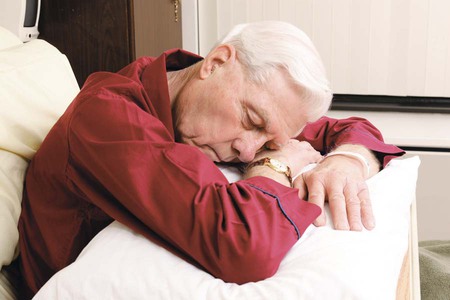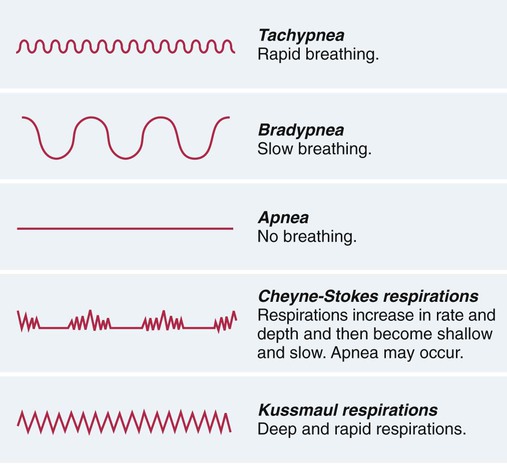• Define the key terms and key abbreviations listed in this chapter. • Describe hypoxia and abnormal respirations. • Explain the measures that promote oxygenation. • Describe the devices used to give oxygen. • Explain how to safely assist with oxygen therapy. • Perform the procedures described in this chapter. • Explain how to promote PRIDE in the person, the family, and yourself. Hypoxia means that cells do not have enough (hypo) oxygen (oxia). Without enough O2, cells cannot function properly. Anything affecting respiratory function can cause hypoxia. The brain is very sensitive to inadequate O2. Restlessness is an early sign. So are dizziness and disorientation. Report the signs and symptoms in Box 26-1 at once. Hypoxia threatens life. All organs need O2 to function. Oxygen is given (p. 412). The cause of hypoxia is treated. Adults normally breathe 12 to 20 times per minute. Normal respirations are quiet, effortless, and regular. Both sides of the chest rise and fall equally. These breathing patterns are abnormal (Fig. 26-1): • Tachypnea—rapid (tachy) breathing (pnea). Respirations are more than 20 per minute. • Bradypnea—slow (brady) breathing (pnea). Respirations are fewer than 12 per minute. • Apnea—lack or absence (a) of breathing (pnea). • Hypoventilation—breathing (ventilation) is slow (hypo), shallow, and sometimes irregular. • Hyperventilation—breathing (ventilation) is rapid (hyper) and deeper than normal. • Dyspnea—difficult, labored, or painful (dys) breathing (pnea). • Cheyne-Stokes respirations—respirations gradually increase in rate and depth and then become shallow and slow. Breathing may stop (apnea) for 10 to 20 seconds. • Orthopnea—breathing (pnea) deeply and comfortably only when sitting (ortho). Breathing is usually easier in the semi-Fowler’s and Fowler’s positions. Persons with difficulty breathing often prefer sitting up and leaning over a table to breathe. This is called the orthopneic position. (Ortho means sitting or standing. Pneic means breathing.) Place a pillow on the table to increase the person’s comfort (Fig. 26-2). Position changes are needed at least every 2 hours. Follow the care plan. Deep breathing and coughing are usually done every 1 to 2 hours while the person is awake. See Focus on Communication: Deep Breathing and Coughing. See Delegation Guidelines: Deep Breathing and Coughing. See Promoting Safety and Comfort: Deep Breathing and Coughing. See procedure: Assisting With Deep-Breathing and Coughing Exercises.
Assisting With Oxygen Needs
Altered Respiratory Function
Abnormal Respirations
Meeting Oxygen Needs
Positioning

![]() Deep Breathing and Coughing
Deep Breathing and Coughing




